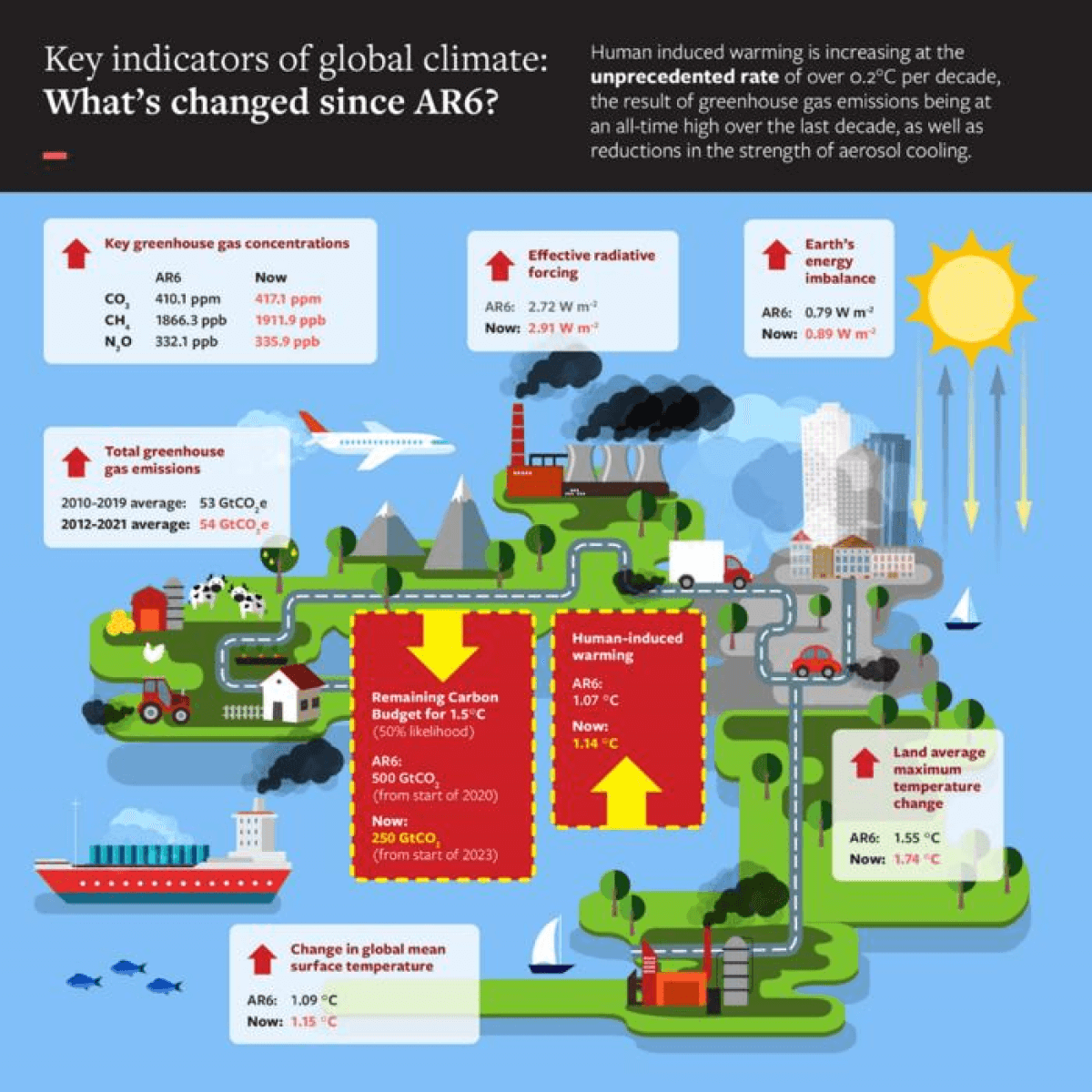KILDARE, Ireland — A recent report is raising the alarm on gas emissions, which hit “an all-time high” and are causing global warming at an unprecedented rate over the past decade. This increase adds to evidence that Earth is approaching a “point of no return,” with catastrophic outcomes such as widespread flooding, heatwaves, and famines looming.
Equivalent to an annual release of 54 billion tons of carbon dioxide, these levels have halved the remaining carbon budget intended to give us a better than 50 percent chance of keeping climate change to 1.5°C within the past three years.
A team of 50 international experts has initiated a project to provide yearly updates on key climate indicators, ensuring timely awareness of crucial aspects.
“Decisions made now will have an impact on how much temperatures will rise and the degree and severity of impacts we will see as a result. Long-term warming rates are currently at a long-term high, caused by highest-ever levels of greenhouse gas emissions. But there is evidence that the rate of increase in greenhouse gas emissions has slowed,” says Professor Piers Forster, the project’s coordinator from the University of Leeds, in a media release. “We need to be nimble-footed in the face of climate change. We need to change policy and approaches in the light of the latest evidence about the state of the climate system. Time is no longer on our side. Access to up-to-date information is vitally important.”
Since the last major assessment two years ago, temperatures have continued to rise due to human activity.
As experts convene in Bonn to lay the groundwork for the major COP28 climate conference in the United Arab Emirates in December 2023, this information becomes more critical. Policymakers, climate negotiators, and civil society groups require access to up-to-date, robust scientific evidence to inform their decisions, the researchers emphasize.
The United Nation’s Intergovernmental Panel on Climate Change (IPCC) is considered the authoritative source of scientific information on climate state. However, the time it takes for the IPCC to produce major assessments can be five or 10 years, creating an “information gap” when climate indicators are rapidly changing.
To bridge this gap, Prof. Forster and colleagues have developed an open data, open science platform – the Indicators of Global Climate Change and website. They discuss changes in key indicators since the publication of the IPCC’s Sixth Assessment Working Group 1 report in 2021.
They report that manmade warming, primarily caused by burning fossil fuels, reached an average of 1.14°C for the recent decade (2013 to 2022), up from 1.07°C between 2010 and 2019. Human-induced warming is now increasing at a rate of over 0.2°C per decade.
While there has been a positive shift away from coal, this change has had a short-term impact, adding to global warming by reducing particulate pollution in the air, which has a cooling effect.

“An annual update of key indicators of global change is critical in helping the international community and countries to keep the urgency of addressing the climate crisis at the top of the agenda and for evidence-based decision-making,” stresses co-author Professor Maisa Rojas Corradi, Minister of the Environment in Chile. “In line with the ‘ratchet-mechanism’ of increasing ambition envisioned by the Paris Agreement we need scientific information about emissions, concentration, and temperature as often as possible to keep international climate negotiations up to date and to be able to adjust and if necessary correct national policies.”
In 2020, the IPCC calculated the remaining carbon budget was around 500 gigatonnes of carbon dioxide. However, by the start of 2023, the figure had approximately halved due to continued emissions and updated estimates of human-induced warming.
“Even though we are not yet at 1.5°C warming, the carbon budget will likely be exhausted in only a few years as we have a triple whammy of heating from very high CO2 emissions, heating from increases in other GHG emissions and heating from reductions in pollution. If we don’t want to see the 1.5°C goal disappearing in our rearview mirror, the world must work much harder and urgently at bringing emissions down. Our aim is for this project to help the key players urgently make that important work happen with up-to-date and timely data at their fingertips,” warns Prof. Forster.
Deep reductions in greenhouse gas emissions are necessary worldwide, or Earth’s temperatures will surpass efforts to limit heating to 1.5C (2.7F).
“This robust update shows intensifying heating of our climate driven by human activities. It is a timely wake up call for the 2023 global stocktake of the Paris Agreement – the pace and scale of climate action is not sufficient to limit the escalation of climate-related risks,” adds co-author Dr. Valerie Masson-Delmotte from the University of Paris Saclay, who co-chaired the IPCC’s Sixth Assessment report.
Recent IPCC reports have shown that with each additional increment of global warming, the frequency and intensity of climate extremes, including heatwaves, heavy rainfall, and droughts, increase. This trend poses significant challenges for food security as the global population is expected to reach 10 billion within the next three decades.
The report is published in the journal Earth System Science Data.
South West News Service writer Mark Waghorn contributed to this report.


This is nonsense. The CERES satellite data shows that the earth has a stable climate that is in no way controlled by CO2. This is just people making money by scaring other people.